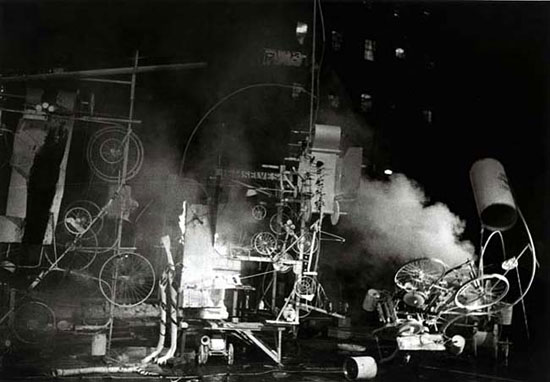“Nouveau realism”, an art movement founded in the 1960s by
Pierre Restany and Yves Klein, focused on decreasing the gap between art and
reality by incorporating daily materials into their artwork. Jean Tinguely was one of nine artists that greatly
influenced the nouveau realism art movement. Tinguely was a Swiss born artist
who studied in painting and sculpture; however he became more involved in
mechanics and the 4th dimension of time and space in the 1940s.
Although Tinguely has been identified with the nouveau realism movement, I
consider him a performance artist and the father of kinetic art. Performance
art appeared during the same time period as nouveau realism, and stood apart
from other movements because the art interacted with the audience in what was
called a “Happenings”; for instance, Tinguely created a series of “metamatic”
motorized machines, that required audience interaction in order to produce
instant abstract art.

Art in New York. The construction destroyed itself within 30
minutes of beginning its performance in front of an audience of elite art
critics and several news stations. Pieces of the destroyed art piece remain at
the Museum of Modern Art.

No comments:
Post a Comment